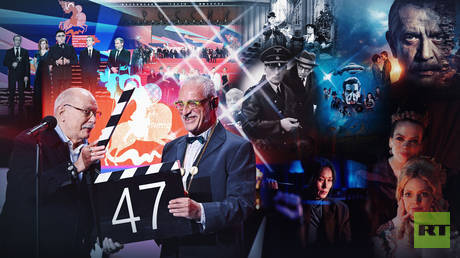Factors Behind Trump's Criticism of Museums
A former museum director from Poland discusses the role of museums as they become “on the ‘front lines’” in times of populist governance.

Machcewicz, a historian affiliated with the Polish Academy of Sciences, recognized this pattern from his past experiences. He played a significant role in the establishment and management of the Museum of the Second World War in Poland, where, as its director, he aimed to highlight the often-overlooked suffering of civilians during wartime and document the heavy losses endured by both Poles and their allies in World War II.
However, as construction progressed on the museum, the political landscape shifted. The right-wing Law and Justice Party gained a parliamentary majority and criticized Machcewicz’s historical perspective as being unpatriotic, part of their nationalist agenda. For eight years, until Law and Justice lost power in 2023, the Gdańsk museum became embroiled in an intense struggle over national memory politics, culminating in Machcewicz’s removal shortly after the museum's public opening in 2017.
He perceives parallels with current developments in the United States and believes that Trump’s executive order represents a troubling attempt to control the narrative around the country's history, echoing the rhetoric that targeted museums in Poland.
With the right-wing government in Poland now out of office, Machcewicz reflected on lessons for Smithsonian leaders concerning the struggle over historical narratives and why museums are often high-priority targets for populist movements.
This conversation has been edited for length and clarity.
You helped design the Polish Museum of the Second World War since its announcement in 2008 and directed it until your ousting by the right-wing government in 2017. What unfolded during this period?
The museum was the largest historical museum in Poland under construction. Our goal was to represent not just Polish wartime experiences but those of other nations as well, focusing on civilian suffering rather than solely on military achievements.
From the outset, the concept faced opposition from the Law and Justice Party, then in the opposition. They condemned our approach as insufficiently patriotic, too pacifistic, and overly European.
What strategies did Law and Justice employ against you?
Initially, they used administrative tactics: reducing our budget and sending audit teams to uncover alleged financial or legal irregularities. Public television, under government control, and right-wing media also launched smear campaigns against me, accusing me of lacking patriotism and serving foreign interests. They even attempted to dissolve the museum by merging it with a fictitious institution before it opened. Fortunately, I was able to suspend this through the courts.
After that, I faced an uphill battle to complete the exhibition's construction and installation against my own government. I ultimately succeeded in opening the museum in 2017, yet within two weeks, the government enacted their plan to merge it with another institution, leading to my removal.
Typically, the move toward authoritarianism doesn't occur suddenly unless through military coups; it's a gradual process. It's possible to slow this down, particularly when courts maintain some independence, highlighting the importance of the judiciary as a battlefield in such struggles.
President Trump issued an executive order in March, calling for the removal of “improper, divisive or anti-American ideology” from public museums. What was your reaction?
Reading this executive order felt eerily familiar. I spent eight years under a government that employed the same language and rhetoric. One could joke that perhaps an adviser from Law and Justice helped draft it because the similarities are striking.
Law and Justice accused individuals like me of promoting a “history of shame” — diminishing Polish history by highlighting its antisemitic elements and other dark chapters. Similar accusations are present in this executive order.
Another notable parallel is the emphasis on museums. The executive order specifies museums and institutions that promote a particular historical perspective. This isn't coincidental; since fewer people read historical texts, millions visit museums to engage with the past, making them a frontline in the struggle over historical interpretation.
In response to the notion of promoting a “history of shame,” what are your thoughts? Was this the emotion you hoped to evoke in visitors?
That accusation was entirely unfounded. Our exhibit encompassed the diverse attitudes of Poles during the war, highlighting both heroism and suffering inflicted by German and Soviet occupiers. It did address antisemitism and incidents like the Jedwabne pogrom by Polish citizens, but these elements did not dominate the museum's overall message. My intent was not to create feelings of shame or pride, but rather to foster critical reflection on the past.
How did you and the public respond to your removal? What lessons might American scholars and museum directors take from this experience?
My approach was risky but ultimately effective, as I succeeded in opening the museum to the public. I utilized the courts to gain additional time for the process.
Another strategy involved appealing to public sentiment. I conducted hundreds of interviews with Polish and international media to amplify pressure on the government. Protesters demonstrated outside the museum with slogans like “Freedom of History” and “Freedom of Museums.”
Although I anticipated my removal, I aimed to complicate matters for the government. My primary goal was to ensure the museum opened to the public. As a tenured professor, I had job security; my main focus was my life's mission rather than my personal job security. I don’t criticize those choosing a more cautious approach.
Why do governments like Law and Justice or the Trump administration seek to control museums?
Museums are increasingly popular, with attendance growing annually. They are also more susceptible to political influence compared to universities. Most museums rely on public funding, making them dependent on government and local authorities. Unlike private universities, which have established safeguards for academic freedom, museums face greater vulnerability.
Moreover, this field is far more visible. A government can impose its views quickly; exhibitions can be created within a year, allowing them to showcase their perspective on history and claim achievements.
Poland and the United States share complex relationships with their histories—Poland with antisemitism during WWII and the U.S. with slavery. How did you address these complications in the museum's exhibits?
Poland has traditionally viewed its history through the lens of heroism and martyrdom, mostly justified due to the brutalities of the 20th century. The Second World War inflicted unprecedented suffering from German and Soviet occupiers, fostering a strong resistance movement.
However, around 25 years ago, works like Jan Gross's *Neighbors*, which detailed the massacre of Jews by Poles, began to change the discourse. Such revelations shocked public consciousness, and the Law and Justice Party seized on this backlash from conservative factions unwilling to accept these narratives. They framed the new findings as lies promoted by those who were not “Polish enough,” very similar to how current discourse around slavery and racism is treated in the U.S.
Why do parties like Law and Justice aim to control historical narratives?
Law and Justice, like many nationalist populist movements, effectively uses identity politics as a key strategy. History serves as a tool to rally their conservative base, instilling fears of perceived attempts to tarnish Poland’s historical reputation while also marginalizing political opponents.
This historical narrative strategy has been used to successfully gain and solidify political power.
What insights can you offer regarding how we navigate American historical discussions?
While American and Polish histories differ, some developments in research and commemoration over the last 20 years have created similar effects. They reflect a resistance to these new insights that challenge simplistic, one-dimensional narratives.
Striking a balance is vital. I oppose the one-sided politics of history from Law and Justice, which emphasizes glorified aspects of Poland’s past. But I also reject an overly leftist viewpoint that advocates for the complete dismissal of previous narratives in favor of focusing only on instances of Polish antisemitism or wrongdoing.
What could this balance entail in the U.S.?
In a democratic society, certain principles should be inviolable: academic autonomy and museum independence must be protected. The dangers posed by Law and Justice's historical narrative tactics stem from the government’s interference in museums. Prominent politicians attacked historians personally, accusing them of not being real Poles, which included attacks on those examining Poland's wartime conduct.
This language in Trump’s executive order is similarly alarming for museums. Unlike in Poland, specific individuals are not named, but institutions like the Smithsonian are identified. Government overreach into research, academia, and museums is inappropriate. This executive order suggests a readiness to cross boundaries that threaten the independence of museums.
What changes occurred at the Gdańsk museum after your ousting?
After my removal, I publicly vowed to defend the exhibition's integrity through every legal means available, indicating that if the new management attempted to alter it, I would pursue legal action based on copyright grounds. This stance was somewhat effective in delaying changes for approximately six months before they began altering the exhibition.
The litigation continued for several years, ultimately reducing the extent of the alterations made. Even after my dismissal, many visitors experienced the exhibition as initially intended.
The new administration altered elements deemed too international or not Polish enough and introduced elements promoting their historical narrative, such as manipulated statistics regarding wartime losses to suggest that Polish casualties were the highest. They also emphasized the martyrdom of Polish Catholic priests, shifting the narrative toward a re-Catholicization of the exhibit. One notable change introduced a new section focusing exclusively on Poles saving Jews, overshadowing the previous balance of perspectives.
What was the outcome of the copyright case?
The court ruled on a compromise, ordering the removal of a contentious video that presented archival footage detailing violence post-WWII, deeming it too international and anti-war. They replaced it with a cartoon animation focused solely on Polish soldiers and heroism. Although the court ruled that other changes were minor, they ultimately obstructed the exhibition's core message.
This copyright litigation lasted several years, concluding during the final year of Law and Justice's governance.
After the 2023 elections, the Law and Justice Party was ousted, and former Prime Minister Donald Tusk returned. What has transpired with the museum since then?
After Tusk’s government took office in December 2023, the director appointed by Law and Justice was removed, and I was invited to return as director. I declined, recognizing the challenges of coming back after so many years.
Currently, I serve as the chairman of the museum’s board. One of my colleagues who co-created the museum is now the director. We have reversed the changes instigated by Law and Justice, restoring the original exhibition format.
The Law and Justice Party mustered support for a demonstration outside the museum, indicating that the issue remains politically charged. However, I take great satisfaction in stating that all of the politically motivated changes implemented during Law and Justice’s tenure have been eradicated.
What advice would you offer to those concerned about the Trump administration's actions?
My experience under Law and Justice illustrates that while it’s feasible for a government to gain control of museums and appoint compliant directors, achieving a singular historical narrative in a democratic society is a far more daunting task. As long as independent universities and media exist, the government cannot fully control historical narratives.
In Poland, the politics of history was a top priority for Law and Justice, establishing new institutions that employed historians aligned with government ideology. Yet they could not dominate universities. Museums, being more easily controlled, faced greater challenges. However, they lost power after eight years, affirming that Poland remains a free country with diverse historical views. Eight years were insufficient for them, and I believe four years would not suffice in the U.S.
Many in the U.S. may feel overwhelmed by the aggressive tactics of the Trump administration, believing it may be unstoppable. However, there are always means to slow its momentum and create time. With commitment from those advocating for democracy and museum autonomy, avenues for action remain open.
Mark B Thomas for TROIB News












